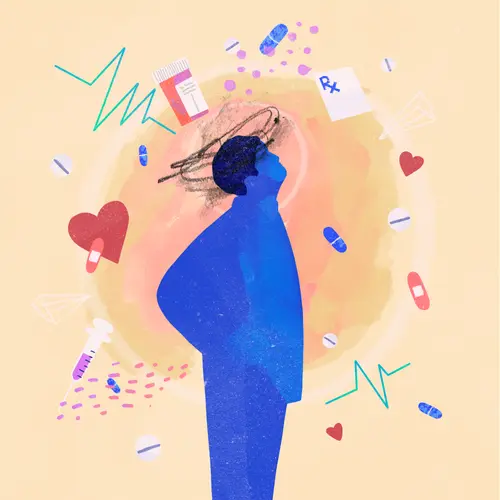If you have a clot in a deep vein, you're at risk for damage to your veins and organs as well as other life-threatening problems. Not everyone who gets DVT will have trouble, but there's a good chance you could be affected.
Stick to your DVT treatment plan to help your body break down your clot and keep your blood moving. Ask your doctor what else you can do to help avoid these complications.
Pulmonary Embolism
DVT in the leg is the most common cause. If your blood clot comes loose from the vein and moves through your bloodstream so it ends up partly or completely blocking an artery in the lungs, it's called a pulmonary embolism (PE). This can happen right after the clot forms, or it may happen later.
About 1 in 10 people with deep vein thrombosis will have a PE. That number may actually be much higher, though, because some people have no symptoms and go undiagnosed.
If you have any of these symptoms, call 911 or go to the emergency room right away:
- Sudden cough, which may be bloody
- Rapid breathing or sudden shortness of breath, even while resting
- Chest pain: sharp or stabbing, burning, aching, or dull (might get worse with deep breaths, coughing, eating, or bending)
- Sudden rapid heart rate
PE can lead to serious problems, including:
- Irregular heartbeat (heart palpitations)
- Heart failure, when your heart can't keep up with the body's demands
- Trouble breathing
- High blood pressure in the lungs, called pulmonary hypertension
- Sudden death in up to 1 in 4 people with a PE
You may need emergency care in the hospital. Doctors may give you medications that dissolve the clot (called thrombolytics) and prevent new clots (called anticoagulants, or blood thinners). Depending on your symptoms and what your tests show, you may need other treatment, too.
Post-Thrombotic Syndrome or Chronic Venous Insufficiency
When a clot stays in your leg or arm for too long, it can damage the vein or its valves. Valves that don't work right let blood flow backwards and pool, instead of pushing it toward your heart.
Post-thrombotic syndrome is usually mild, but some symptoms can be severe. They may not show up until years later. Up to half of people with DVT end up with long-term effects where the clot was:
- Pain
- Swelling
- Darkened skin color
- Skin sores
- Varicose veins -- swollen, sometimes twisted or blue veins you can see under the skin
Because blood that isn't flowing well is more likely to clot, you could also get another DVT or a pulmonary embolism.
Prevention is key. In addition to giving you medicine to prevent further clots, your doctor may recommend that you:
- Wear compression stockings.
- Keep your leg or arm raised while at rest.
- Have a procedure that opens a narrow vein, such as a balloon angioplasty or stenting.
- Get the clot removed with surgery.
Phlegmasia Cerulea Dolens
PCD is a serious condition where the clot, or “thrombosis,” causes extreme buildup of fluid -- even more than DVT -- in a major vein and sometimes in smaller “collateral” veins around it as well.
It’s almost four times more common in the left leg than the right and is rare anywhere other than the legs. Your skin whitens as fluid builds, and may eventually start to turn blue. When that happens, you might also start to notice:
- Blisters on the skin (bullae)
- Burning, prickling, or tingling in the skin (paresthesia)
- Weakness in your muscles and when you move
Untreated, it can start to kill tissue (gangrene), which could turn your skin even darker (black).
The most common risk factor is a cancer tumor somewhere in your body. Other risk factors include:
- Trauma (injury)
- Surgery
- Ulcerative Colitis
- May-Thurner syndrome (iliac artery pushes on vein)
- Hypercoagulable syndrome
- Inferior vena cava filter (device prevents clots from moving to lungs)
PCD is a medical emergency that requires immediate treatment. Doctors will likely give you specialized anticoagulant medications to help break up the clot. These might include:
- Heparin (through IV)
- Low molecular weight heparins (LMWHs)
- Oral factor Xa inhibitors
You will likely need anticoagulant medications for at least 6 months after your initial treatment.

